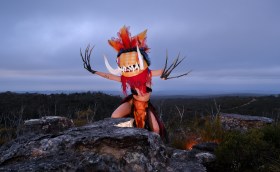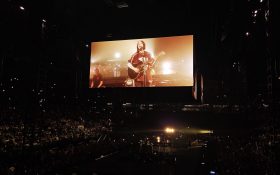When embarking on a corporate partnership push, a common place for many arts organisations to start looking is with larger, high profile corporations and businesses.
The ‘big four’ banks, major airlines, postal delivery services and international car manufacturers are common targets, often receiving thousands of proposals and pitches from different arts, sports and community organisations in a year. While their size and profile makes them obvious targets, these factors also can make them hard to reach, difficult to impress and sometimes challenging to work with.
The ABS defines a small business as having 0-19 employees and a medium-sized business as having 20-199 employees. With just over 2 million small businesses and 83,000 medium-sized businesses in Australia, this represents a large pool of potential small and medium-sized business (SME) partners often overlooked by arts marketers.
Embarking on a partnership with an SME makes good sense for many reasons, particularly for a small or medium sized arts organisation. Firstly, a relationship with a business of a similar size can create more of a partnership between equals. This can mean the business feels they have a greater, more important stake in the future of the arts partner. It can also represent a more affordable marketing opportunity for the business, thereby increasing the proposal’s chance of success.
A direct personal relationship between decision makers is another common feature of partnerships involving a SME. This high level of access and direct contact is rare in larger corporate partnerships. Both the arts and business partners benefit from the speedier resolution that results from direct communication between decision makers and stronger personal relationships can also result in more successful and creative partnership outcomes.
In an SME partnership, the arts organisation is often the first and sometimes sole sponsorship or partnership vehicle for the business. This can mean less competition when pitching the opportunity in the first place. It can also mean the SME’s available partnership resources are channelled towards fewer organisations.
Business partnerships provide arts organisations with a combination of financial and in-kind support. Often driven by financial capacity, the provision of innovative and creative in-kind resources by SMEs is a hallmark of successful partnerships between the arts and businesses from the SME sector.
Another feature of SME partnerships is that both partners tend to be geographically close, often located in the same suburb or regional area. The benefits of this proximity include a shared understanding of local audiences. It can also make it easier to build closer personal relationships with more frequent face-to-face meetings and personal interaction between organisations and staff more likely.
The Creative Partnerships Australia (formerly the Australia Business Arts Foundation) Awards recognise the best partnerships between business and the arts, giving and access programs, volunteering relationships and arts, business and philanthropy leaders in Australia. The SME Award category celebrates partnerships between businesses employing fewer than 200 people and arts or cultural organisations.
Following are two partnerships that were City of Melbourne SME Award finalists in the 2012 Awards, each one demonstrating some of the unique benefits of partnering with an SME.
Direct relationship created opportunities – Arts Project Australia and Leonard Joel
This first-time partnership delivered financial and in-kind support for the work of Arts Project Australia. At the same time it engaged the staff and clientele of Leonard Joel.
Both partners are part of the Victorian art world. Arts Project Australia supports artists with an intellectual disability, promoting their work and advocating for their inclusion in contemporary art practice. Leonard Joel provides auction management services with a focus on art.
Part of a recent business overhaul at Leonard Joel included a focus on developing meaningful alignments with community partners. Upon discovering this, Arts Project invited key Leonard Joel staff for a visit and a partnership began to develop.
Arts Project Australia was seeking a partner to help produce an individual artist catalogue each year for four years, to accompany a series of planned retrospective exhibitions of work by established Arts Project artists. Leonard Joel was able to successfully arrange for the publication of Viewfinder, a comprehensive survey of the work of artist Alan Constable over 20 years in the Arts Project studio.
Leonard Joel also hosted the Outsider Art Fundraising Auction for Arts Project Australia, the largest fundraising event in the history of Arts Project Australia. Leonard Joel worked closely with Arts Project to secure high quality contemporary artworks through galleries, collectors and personal contacts.
The fundraising event provided publicity opportunities and Arts Project and Leonard Joel have also promoted each other and the partnership in their e-news and other communications.
For Leonard Joel, this has been a positive step into engagement with the community. At the same time, Arts Project enjoys being part of a true partnership, rather than simply the recipient of a charitable gift.
This partnership between Arts Project and Leonard Joel has been a close one and, with a four-year horizon, there is a promising future ahead for both partners.
Benefits for the arts organisation
- 1000 copies of Viewfinder and funds raised through its sale
- Support to print a catalogue every year for four years
- Staff development – Arts Project gallery staff spent time at Leonard Joel to learn about auction processes
- Resources for the fundraising event – catering and space provided, artworks sourced and buyers fees waived by Leonard Joel
Benefits for the business
- New networking and promotional opportunities
- Introduction to David Bromley led to Leonard Joel being given a large selection of Bromley artworks to auction
- A partner with strong community credibility
How they made it work
- A formalised agreement in writing
- Regular meetings to discuss the partnership and new ideas
Personal passion drives a winning partnership – The HELIX Project and HARTAC
HARTAC is a family-owned business employing 36 people dedicated to providing safety signage and other safety products, primarily to the WA resources sector.
The co-founder and co-director of HARTAC, Rhoda Harris, had always been a great admirer of Helpmann Award-winning dancer Daryl Brandwood, having seen him dance with the Western Australian Ballet. When Rhoda heard about The HELIX Project, a new solo dance work for Brandwood, she decided it was the perfect opportunity for HARTAC’s entry into the world of arts support.
When the project went into full production, HARTAC was able to provide additional services beyond its original financial investment. These included printing very large format, high-resolution display posters and providing graphic design for the souvenir program.
HARTAC’s contribution as a first-time arts partner meant The HELIX Project also benefitted from support from the WA Premier’s Arts Partnership Fund. The partnership has evolved and continued beyond the premiere of The HELIX Project with HARTAC supporting marketing efforts for potential national and international presenters.
The key principles underlying the partnership are a shared commitment to creating products of excellence, an understanding that true collaboration is based on a vision with mutual benefits and an acknowledgment that success stems from having a talented team of contributors.
These principles have driven the partnership and delivered both tangible and intangible benefits to both partners. The partnership has allowed HARTAC to lift its profile within its target demographic; they key players in the resource sector in WA who have a strong alignment with the arts.
For The HELIX Project, the support of HARTAC proved that attracting partners from non-traditional sources provides benefits beyond those of more traditional sources such as funding bodies. This partnership ultimately meant that The HELIX Project could produce its acclaimed, award-winning season and look ahead to more successful performances.
Benefits for the arts organisation
- Support to stage The HELIX Project
- Large format posters, programs and presentation folders
- Graphic design
Benefits for the business
- Positive media coverage
- Opportunity to demonstrate printing and design capabilities
- Increased corporate and community profile
- Pride in the partnership from all staff members
How they made it work
- As HARTAC is a family-owned business without board members or shareholders, decisions could be made immediately.
- A direct relationship between the partners meant needs and opportunities could be addressed very quickly.
As with most successful arts and business partnerships, a key ingredient of SME partnerships is time. Take the time to identify and approach the right prospective business partners. Spend time finding out exactly what their business objectives are. Invest time in developing unique and tailored partnership ideas. Allow time to draft individual partnership proposals, each one calculated to solve business problems or create opportunities for a specific business. Finally, make the time to build and maintain solid relationships with business partners and actively identify opportunities to leverage the partnership.
For more information on developing successful partnerships with small business, visit www.creativepartnershipsaustralia.org.au.





